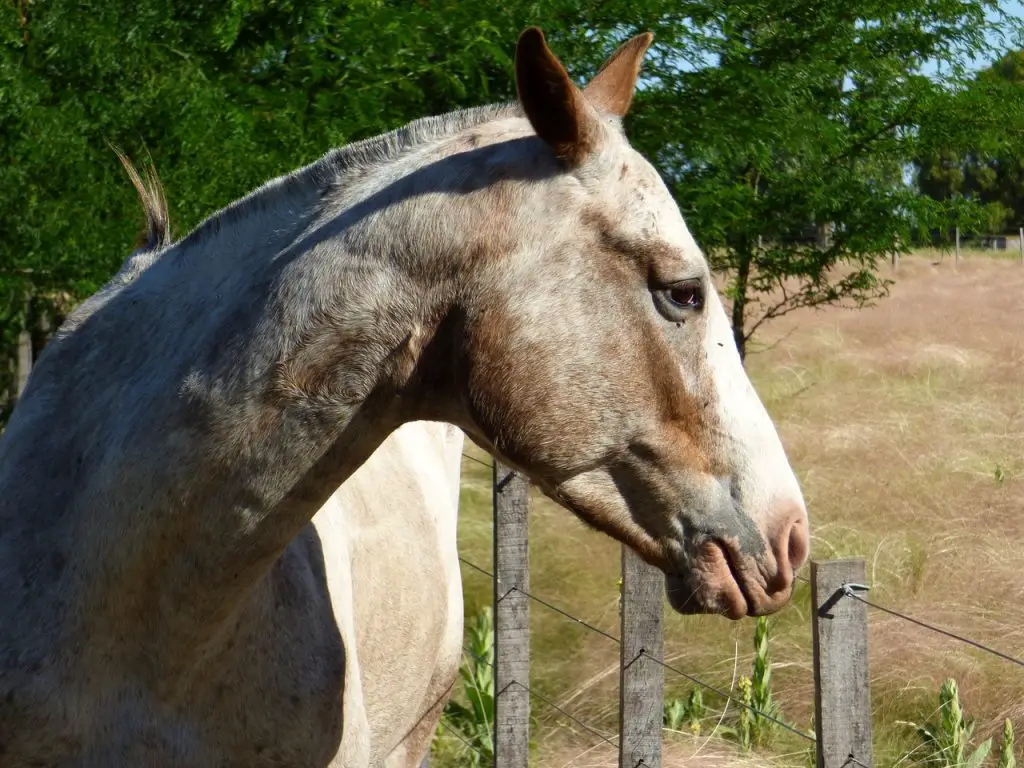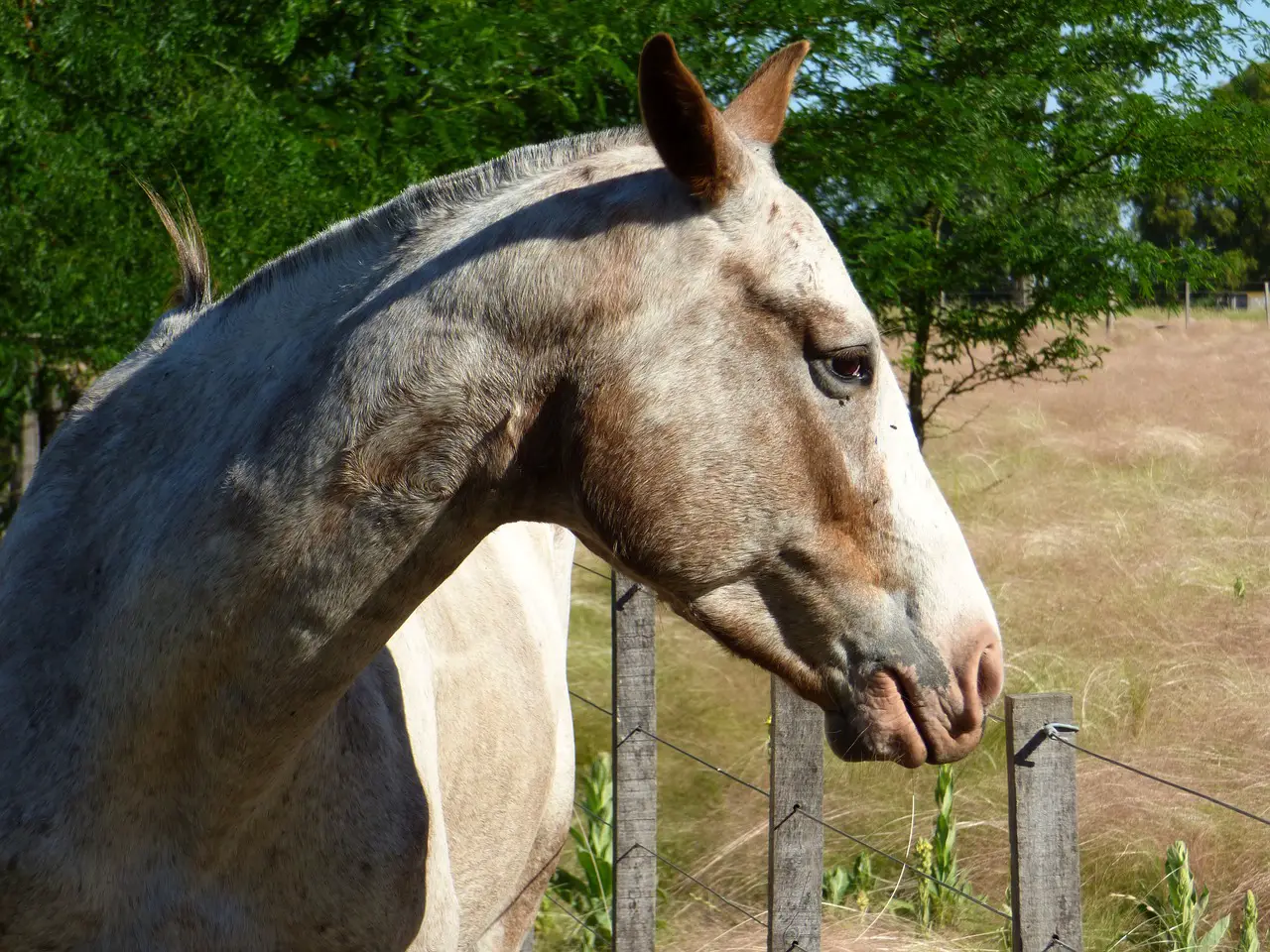Last Updated on February 23, 2022 by Allison Price
You can help your horse by overcoming the common myths surrounding this contagious disease.
Perhaps it is the name that makes people feel more anxious about horse disease. No one wants to have to care for a sick horse again. Anyone who has read John Steinbeck’s The Red Pony about a boy’s first experience with death and loss, can’t help but feel the worst. Yes, strangles is a horrible name with a bad reputation. Horses that contract a Streptococcus Equi infection are often sick and unable to train.
George Sengstack is the manager of Callithea Farm in Potomac. He says that strangles have become more commonplace over time. “Fourteen year ago, before horses could be towed in and out, there was a horse that got strangled. He was kept away from other horses and in a round pen. We were careful about using separate equipment. It wasn’t too difficult for him to get better.
Sengstack’s experience in strangles is more common than Steinbeck’s, but this highly contagious disease can cause serious problems for horses. Equine distemper is also known as horse flu. It usually starts 10-12 days after being exposed to S. equi.
The horse will first experience a high fever, depression and appetite loss. The nostrils begin to leak thick, yellow pus. Within three weeks, the abscessed glands at the throat could burst open and drain. The “strangling” sound horses make when they try to draw air into their blocked airways is the reason for the disease’s name. Doctors will not only look for obvious signs of the disease, but can also run culture tests to determine if the nasal drainage contains streptococcal organism.
Exposure can occur when a horse that is shedding the S. Equi bacterium but not showing any symptoms of sickness, is brought into a herd. Horses can be exposed to the organisms by touching their muzzles or sharing equipment such as buckets or bridles. Strangles can quickly spread, causing large outbreaks in herds that have not been vaccinated or exposed. Young horses and foals are particularly vulnerable to the infection. Horses usually recover but some horses can die. Secondary pneumonia is more common in immuno-compromised or debilitated animals. Sometimes, S. equi can infect lymph nodes further within the body, causing a more serious condition known as bastard strangles.

The best way to stop the spread of the disease is isolation. Horses infected with the disease usually develop symptoms within two weeks. Therefore, it is important to prevent potential carriers from coming into contact with healthy horses for as long as possible. The disease spreads normally within three to four weeks for newly arrived horses and exposed horses.
Strangles are not a major problem in textbook terms. It rarely kills horses or causes long-term damage. Physical separation is the best medical treatment. It is difficult to believe that strangles can be prevented or treated with the same methods as other common equine diseases. If treatment is difficult and vaccines are not reliable, it must be a super infection. It’s not. Many strangles myths and misconceptions overplay current scientific knowledge. Effective prevention is possible now, thanks to recent genetic advancements in the characterization of strangles organism.
Myth #1 – S. equi Is Invincible
John Timoney, long-time researcher on strangles, is not correct, according to the University of Kentucky Keeneland professor of Infectious Diseases. He says that strangles can survive and that farms and pastures that are prone to recurrences of the disease are not true. It can survive for days, or even weeks if it is frozen. It is a poor survivor of the environment. It is very incompatible with other bacteria, and can live for hours, days, or even weeks. The soil and surrounding areas are not contaminated by the original strangles outbreak months later when all horses are healthy and nasal swabs have returned negative for S. equi.
Strangles can still be found on farms. However, it is important to keep an eye out for possible spread from horse to horse. Tom Kranz of Longacres Farm, East Aurora, N.Y. took great care to control the disease after Brownie, a 21-year old camp pony, returned from Ohio with a brewing illness. Brownie was placed in an isolation barn, where a single staff member cared for him. He removed his shoes and put on rubber boots before allowing him to enter the stable. Brownie was not allowed to come in direct contact. She was fed by her staff member, who removed her shoes and put on rubber boots before she left the stable. This precaution decreased the chance of Brownie spreading the bacteria to other parts of the farm. Brownie’s caretaker cleaned herself and changed her clothes before returning to the main barn.
Kranz employed an outsider to help Brownie when the abscesses in his throat erupted, making him particularly infectious. These precautions reduce the risk of infection in horses that are shedding bacteria. Over time, natural forces will destroy any bacteria left behind. It is false to believe that a contaminated farm will never recover.
Myth #2 – Once Infected, Always Protected
Natural infections tend to strengthen immunity to S. equi, but this is not a guarantee of long-term protection. Timoney states that 1 in 4 horses could be reinfected after a strangles injury. Bryan M. Waldridge DVM, Auburn University associate professor of horse internal medicine, discusses the scientific evidence that the variability in equine immune responses to bacteria. He says that natural exposure can cause immune reactions lasting anywhere from several years up to six months. “A horse that has been vaccinated is more likely than a horse who has been reexposed. He may respond in the same way as a vaccinated horse, and may not show any clinical signs.
You can’t know if a horse is in good health unless you have taken care of him from birth. A serum antibody test can be performed to determine if there are any immune factors that target S. equi, even though it is not routine veterinary practice. If antibodies are found, it is likely that the horse has been vaccinated.
Myth #3 – Antibiotics are a Must
Waldridge says no. Waldridge says that horses with only mild lymph node enlargement, drainage or respiratory disease should not be treated. Timoney suggests treating horses who have trouble breathing because it can lead to obstruction of the airway in a matter of hours. If the temperature is not more than 102.5 degrees Fahrenheit, and the animal is doing well, it’s best to treat the fever.
Brownie, the camp pony fell into this category. Kranz says that antibiotics are possible if there is a secondary infection such as strangles, or signs of a horse with a snotty nasal. This was a consensus of Kranz and other vets. It is sometimes just as effective to let it go its course. Brownie suffered from a horrible abscess, but was not ill.
The treatment of strangles victims with more severe symptoms varies from case to case. However, penicillin is a common treatment option. Injectable penicillin will be given to sick horses who have difficulty swallowing, breathing, or have large amounts of pus in their guttural pouches. This may also include drainage of lymph nodes affected and surgical drainage. To reduce swelling and fever, anti-inflammatory drugs such as flunixin meglumine and phenylbutazone (Banamine) are recommended.
Bastard strangles may be encouraged by an ineffective or short-lasting antibiotic treatment. Bastard strangles are a condition that affects the lymph nodes in the abdomen and chest. These internal abscesses can become very serious and cannot be treated or drained. Usually, horses die from ruptured body cavities.
Myth #4 – Vaccinate to Be Safe
The safety and effectiveness of strangles vaccination is not well-documented. Horse owners still have to make a risk-benefit assessment. Intranamuscular (IM), strangles vaccines from decades ago often caused injection-site reactions, sometimes triggering actual cases of the disease or failed to protect the recipient when natural exposure occurred. A condition known as purpura hemorhagica, which is an immune-mediated reaction that affects circulation in the skin or mucous membranes, can also be caused by hypersensitivity to the S. Equi antigens. 20 years ago, the isolation of an antigenic S. Equi surface protein-SeM allowed injectable vaccine manufacturers to create products that only contained the affected portion of the organism. This eliminated the possibility of horses contracting the disease. Purpura and injection-site abscesses are still possible complications.
Intranasal strangles vaccinations were developed more recently based on the horse’s natural immune response to S. Equi. Waldridge says that the intranasal vaccine is supposed to improve immunity against strangles. It stimulates local antibody production in the nasal cavity to stop the bacteria from entering the respiratory tract and causing disease. “Additionally the intranasal vaccination is a modified live bacteria and generally modified-live vaccines provide good immune responses.” This latter characteristic increases protection but poses a risk during administration. Multiple vaccines can be given to horses in one session. The modified live S. equi found in the intranasal formula can contaminate any IM injections and cause abscesses. This is why it is important to ensure that the intranasal vaccine is administered after all IM injections are completed.
However, animals vaccinated with the intranasal vaccine may be exposed to wild strains of S. equi if they are immunized during an outbreak of strangles. The live vaccine may not be able to respond when wild strains are already present among horses. Inadvertently, the person administering the vaccine could transmit wild virulent organisms from horse to horse. Timoney says, “I don’t recommend using live vaccine in case of an epidemic.” Timoney says that both types of vaccine can cause problems because they don’t give immunity for at least two to three weeks. It is better to isolate, monitor and treat the affected person rather than vaccinating.
Waldridge also agrees that it is not wise to vaccinate horses with clinical signs of strangles. Discuss with your veterinarian whether it is advisable to vaccinate your horses when there is an outbreak locally, but not through direct contact via shared fence lines, bridle paths, or other commingling events. Timoney states that vaccination is possible for horses in a geographically separated group from the affected herd.
The type of horse you are leading will determine whether or not to include a strangles vaccine as part of routine preventive programs. Although S. equi vaccination doesn’t provide 100% protection, it can reduce the severity of the disease in horses that are infected. Even partial protection can be better than none for at-risk horses due to the fact that improved vaccine formulations cause fewer adverse reactions. Waldridge states that vaccination is beneficial for horses exposed to a changing population of horses such as horses at boarding stables or shows, trails rides, racetracks and trail rides. Protection may also be necessary for breeding stock. Timoney advises that weanlings should be vaccinated at six to eight month old. If there is a risk of disease to foals, it is important that mares are vaccinated one month prior to foaling.
For most horses, annual strangles vaccination is sufficient. Because of the low chance of infection, horses kept in close-knit herds may do better without immunization.



